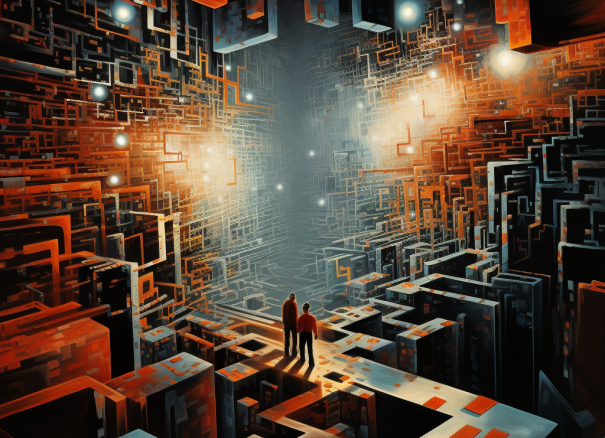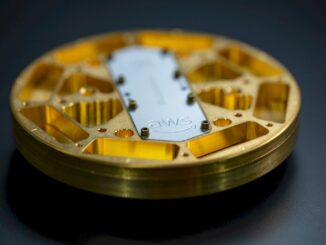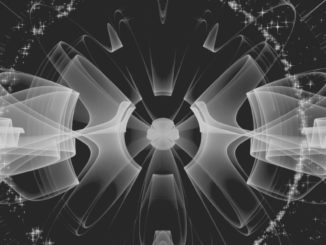
When it comes to natural disasters, every second counts—and the clock may just be ticking a little slower following a collaboration between Terra Quantum and Honda Research Institute Europe (HRI-EU).
By entangling quantum computing with traditional algorithms, the team has paved a ‘superposition’ of escape routes designed to evacuate people more quickly and efficiently in emergency situations.
This hybrid approach fuses the world of quantum mechanics with the urgency of real-world crises, aiming to create not just the shortest path out, but the ‘quantum leap’ in emergency response we’ve been waiting for.
According to the Honda/Terra Quantum team, disasters have increased fivefold over the past 50 years, primarily due to climatic changes and extreme weather conditions.
In such high-stakes scenarios, emergency response measures like evacuation routes are essential for public safety. “Common” traditional algorithms, such as Dijkstra’s node-wise shortest path algorithm, often encounter limitations when applied to dynamic and unpredictable situations like natural disasters.
The project delved into the capabilities of hybrid quantum technologies in the context of emergency evacuations. A proof-of-concept (POC) was implemented, simulating an earthquake on a realistic small-town map. The problem was modeled as a dynamic computational graph, where the earthquake affects certain areas, creating changes in traffic flows, particularly near the exit points of the town.
The team used a hybrid quantum machine learning model, specifically employing feature-wise linear modulation (FiLM) neural networks. These networks were split into classical and quantum components running in parallel, imitating the node-wise Dijkstra’s algorithm on dynamically changing graphs. The FiLM layer used earthquake coordinates as input features to modulate the traditional neural network, thus making real-time adjustments to the evacuation routes.
The model was trained on simulated data that replicated a town map impacted by an earthquake, collecting routing data generated through Dijkstra’s algorithm.
According to Honda Research, this ML architecture managed to work with less than 1% of the total map data, an advantage in an evolving emergency scenarios.
The team claims their quantum hybrid model demonstrated superior performance in comparison to purely classical approaches.
The model’s accuracy improved by 7%, and the quantum component contributed 45.3% to the overall prediction capability. Furthermore, the model was tested for its efficiency in terms of quantum processing unit (QPU) integration, including analyses like ZX calculus reduction, Fourier embedding, and Fisher expressivity.
Both quantum and classical processing contributed significantly to the output, suggesting no model primacy. Additionally, the developed architecture is compatible with trapped-ion quantum hardware devices, allowing for future implementations on large-scale quantum computing hardware. The study also showcased the entire stack of hybrid quantum machine learning, including problem formulation, classical resolution, and quantum efficiency analysis.
Terra Quantum plans to adapt the developed solution for various city landscapes and other emergency scenarios. In terms of technical detail, future research may focus on employing other quantum machine learning techniques and possibly exploring the role of reinforcement learning for dynamic optimization problems.
Markus Pflitsch, CEO of Terra Quantum, sees the potential applications of quantum technologies in automotive and mobility sectors. Dr. Sebastian Schmitt, Principal Scientist at HRI-EU, emphasized the promising step the project represents for employing hybrid quantum-classical learning architectures in real-world use-cases.
The collaboration between Terra Quantum and HRI-EU has successfully demonstrated a working model using hybrid quantum computing methods for emergency evacuations. The research confirms the potential of employing quantum machine learning for solving complex, real-world problems.
Going forward, the research could expand to test the model’s applicability in a range of different and larger scenarios, exploring its utility for other types of natural disasters and incorporating more complex variables.





Nothing quite beats ZX-(81?)-calculus’ Hadamard-mediated HZH = X-gate tango (for the Pauli Z)! The study is quite intriguing, conjugating graphs with ML and quantum compute (as POC), possibly even retro-futuristic 8-bit machinery (or not?) — thanks for writing about that cool research!
Figure 4 of their paper (linked under “Honda/Terra …”) seems to summarize their results as follows: a) 61% of classical NN routes are worse than Dijkstra and 15% are better; b) 45% of hybrid quantum NN routes are worse than Dijkstra and 25% are better. A valiant research effort then, but not quite ready for big shakedown primetime it seems … cool nonetheless!